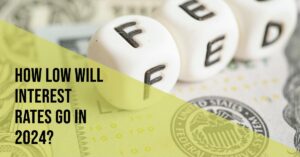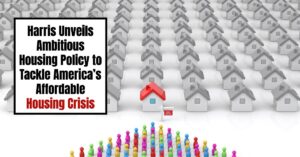As of August 16, 2024, the current mortgage rates are 6.56% for a 30-Year Fixed-Rate Mortgage, 5.90% for a 15-Year Fixed-Rate Mortgage, and 6.21% for a 5/1 Hybrid Adjustable-Rate Mortgage (ARM). These rates may vary based on factors such as location and lender offerings, but they provide a snapshot of the borrowing costs currently faced by potential homebuyers.
Current Mortgage Rates as of Aug. 16, 2024 & Next Week's Forecast
Key Takeaways
- Current Average Rates: The average mortgage rates are:
- 30-Year Fixed: 6.56% (Bankrate)
- 15-Year Fixed: 5.90%
- 5/1 Hybrid ARM: 6.21%
- Rate Predictions: Experts anticipate a slight decline in mortgage rates over the coming weeks.
- Refinance Trends: Homeowners are increasingly seeking refinancing options to take advantage of varying rates.
- Geographic Variability: Rates can differ significantly by region, affecting local markets.
As noted above, today’s mortgage rates reflect the financial climate and can significantly impact borrowing decisions. These rates suggest that borrowers should consider their options carefully, as the type of mortgage can impact long-term financial commitments.
Comparative Historical Context
To understand the current rates better, it is essential to note that mortgage rates have increased significantly over the past year. Rates were substantially lower last August, averaging around 5.5% for similar loans. This upward trend reflects broader economic factors, including inflation and adjustments to borrowing costs impacting both lenders and borrowers.
Factors Influencing Current Mortgage Rates
The current mortgage rates are influenced by several key factors:
- Economic Indicators: Inflation rates, employment statistics, and overall economic health influence mortgage pricing.
- Federal Reserve Policy: The decisions made by the Federal Reserve regarding interest rates directly impact mortgage rates. Borrowers should stay informed about any changes in policy to understand potential rate adjustments.
- Market Conditions: Supply and demand in the housing market can cause significant fluctuations in mortgage rates.
Next Week's Forecast
Looking forward, many experts believe that mortgage rates may show slight decreases or stabilize in the coming weeks. According to Bankrate, many analysts are projecting a potential light downward trend, with expectations for the 30-year fixed mortgage to average around 6.5% to 6.7% in the short term.
Expert Opinions
Economists predict that as inflationary pressures ease, mortgage rates might reflect a downward trend. As per the reports from various lending institutions, such as Fannie Mae, forecasted rates indicate a possible average around 6.4% by the end of 2024, illustrating a modest improvement in borrowing conditions for prospective buyers.
Regional Rate Variability
It is important to emphasize that mortgage rates can vary widely by region. For example, a 30-year fixed mortgage may be offered at different rates in different states. Homebuyers are encouraged to consult with local lenders to find the best available rates tailored to their location.
Next Month's Predicted Outcomes for Mortgage Rates
Should the Federal Reserve decide to lower interest rates in September:
- Mortgage Rates Likely to Drop: Historically, a decrease in the federal funds rate leads to lower mortgage rates. This decline can bolster home buying and refinancing activities, as more borrowers take advantage of favorable lending conditions.
- Increased Home Purchases: Lower mortgage rates generally drive up home purchases, providing a boost to the real estate market. This could lead to increased competition among buyers, driving up home prices in certain areas.
Conversely, if the Fed maintains or raises interest rates:
- Mortgage Rates May Stabilize or Increase: A decision to hold rates steady or implement an increase could mean that mortgage rates remain elevated, continuing to pose challenges for new buyers and those looking to refinance.
- Potential Slowdown in Housing Market: Higher mortgage rates can dampen buyer enthusiasm, leading to reduced demand for homes and potentially resulting in slower price appreciation or declines.
Refinancing Trends and Opportunities
In light of the current rates, many homeowners are exploring refinancing options. This can be advantageous for individuals looking to:
- Lock in a lower interest rate before predicted increases.
- Switch from an adjustable-rate mortgage to a fixed-rate mortgage for long-term stability.
- Access home equity for financial needs.
Homeowners should carefully analyze their financial situation and consult mortgage experts before deciding on refinancing. Keeping an eye on economic indicators and expert predictions can guide informed financial decisions.
ALSO READ:
- How Lower Mortgage Rates Can Save You Thousands?
- How to Get a Low Mortgage Interest Rate?
- Will Mortgage Rates Ever Be 4% Again?
- Will Mortgage Rates Ever Be 3% Again: Future Outlook
- Mortgage Rates Predictions for Next 2 Years
- Mortgage Rate Predictions for Next 5 Years
- Summer 2024 Mortgage Rate Predictions for Home Buyers
- Mortgage Rate Predictions for 2025: Expert Forecast
- Prediction: Interest Rates Falling Below 6% Will Explode the Housing Market
- Mortgage Rate Predictions: Why 2% and 3% Rates are Out of Reach











